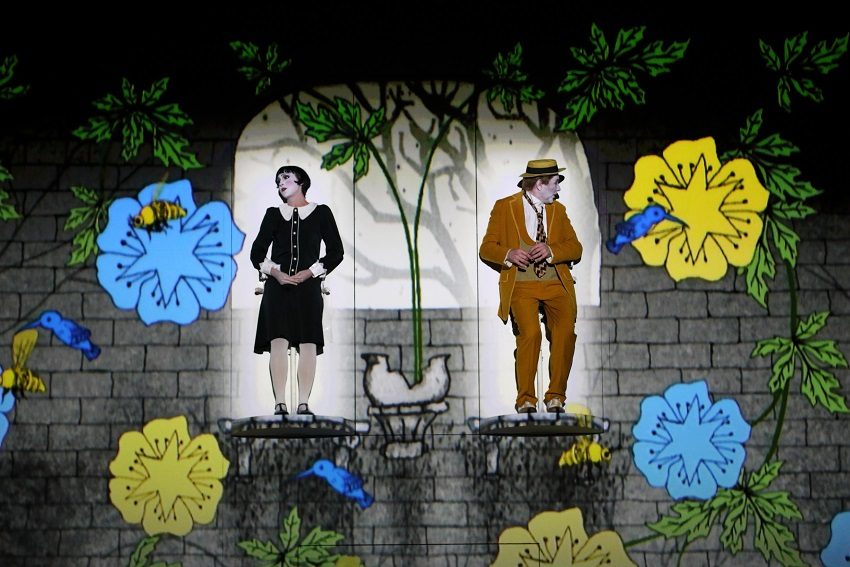Review: The Magic Flute

Barrie Kosky and 1927 have reimagined Mozart’s final opera with playful animation inspired by the art of interwar Europe, but is this modernisation project incomplete?
Mozart’s The Magic Flute contains one of opera’s most iconic and difficult arias: Der Hölle Rache sung by the Queen of the Night. Tailored specifically for the vocal range of soprano Josepha Hofer, the composer’s sister-in-law, the demanding coloratura requires repeated high F notes. Performing it is a dizzying and terrifying feat.
In Barrie Kosky and 1927’s co-production of The Magic Flute, the Queen is imagined as a fabulous skeleton-spider. As she sings her aria, imploring her daughter Pamina to take vengenance on kidnapper Sarastro, the high notes manifest as blades. The fearsome matriarch is throwing knives at Pamina, who is ensnared in her web, frightened by her mother’s instructions to kill. The knives are, of course, animations playing out on a large screen, the only object on stage.

Mozart intended for the Queen’s music to be fast and agile, and similarly, these are the strengths of presenting opera in such novel form. Where traditional stage construction is cumbersome, animations can transport you across landscapes with rapid speed—to the pits of hell or the midst of star-spangled space. In this interpretation of The Magic Flute, 1927 animator Paul Barrit has crafted a charming pictorial world, filled with surreal and dream-like creatures: there are pink female-elephants splashing about in martini glasses, and boy-butterflies reminiscent of artist Henry Darger’s work. Drawing heavily on inspiration from 1920s cartoons, silent film, and the Weimar era; many scenes are delightful, and Barrit has cleverly used animation to interject additional humour into the piece. Though some attempts at comedy feel trite—Sarastro’s slaves being endowed with female vaudevillian legs, for example—most are fresh and unexpected.
A stage offers a spatial depth to a performance that a screen does not, and so the trapping of a single screen is a feeling that the stage is at times under utilised. When Barrit’s animations soar, it isn’t a concern—but where they are bare, a multi-layered approach to the stage might have added necessary depth. Other modifications to traditional production translate extremely well: the 1920s-inspired costumes aligned with the visuals on screen, and the condensing of dialogue into silent intertitles engenders a sense of intimacy with the audience, sharpening the connection to silent film.
The Magic Flute’s storyline is confusing and wondrous, blurring the distinctions between genres and the motivations of its characters. The libretto, written by Emanual Schikaneder, is based on a multitude of sources, combining Viennese folk theatre, popular fairytales, and opera seria. Yet it is also anti-woman and anti-black. With the modernisation of other elements, there was a striking incongruency with outburts of sexism and racism in Schikaneder’s text. This solicits the question: should the project of modification have been further extended?
The Magic Flute was performed at the Festival Theatre on March 1
The Magic Flute
Friday, March 1 – Sunday, March 3
adelaidefestival.com.au/
Header image:
Tony Lewis / Adelaide Festival